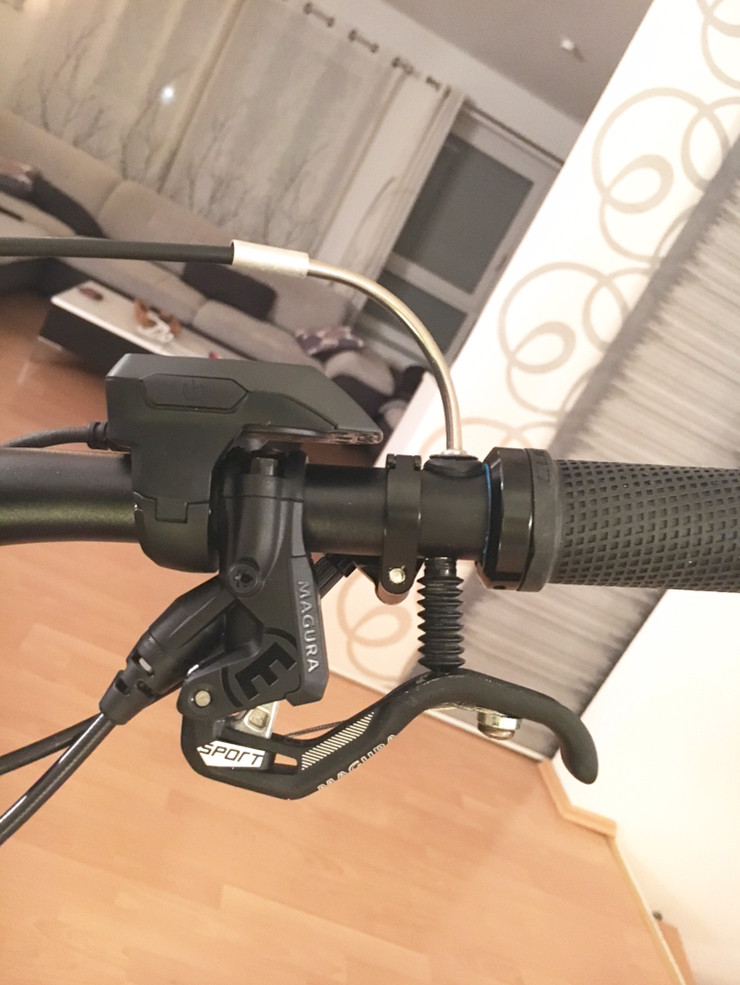Indicated in the comments and indicated in an answer, but not really covered yet.
A recumbent trike or bike.
The biggest difference is that on recumbent bikes and trikes your sitting position is such that you do not need to take any of the weight of your body and almost or completely non of the breaking force on your arms.
Many recumbent bikes and trikes will be suitable with no or little adaption. Depending on how the cycle has its gearing and brakes, and how much use you have of your hand, you may need to have the brakes moved to one side of the handle bar, and the same for the gearing.
Many shops where they sell recumbent trikes are used to adapting them for users with restrictions, they usually have sources for unusual gearing and braking mechanisms, which allow one handed use.
On the other hand, for people who have a little use of their poor hand, changing gears might be done with just one finger, and the brakes may already be such that your good hand does the more important brake.
I would certainly let someone with limited use of their hands use my standard delta trike, after checking with them whether they were able to switch gears and use the brakes. And if they feel confident, also my standard 'bent bike.
Recumbent bikes might be the solution, they do require a bit more learning to ride than trikes. On the other hand, they might be more available and easier to get one for a rental or loan than trikes.
There are recumbents which are even more suitable for long term use with just one or no hands, but hard to find and harder to learn to ride.
Flevo trikes have been fitted out with coaster (back pedal) breaks and ways to switch gears that do not require the use of hands, (switch with the heel of a foot or with a shoulder) and steering is done with the balance and the way you pedal. It does take longer to learn to ride these trikes (and as not many were build, they are a bit harder to find and only second hand or own build) but if needed they might be the answer to a problem.
I ride a Flevo trike these days (also own a Flevo bike) and ride with very little use of my hands to steer, I do use my hand for gear changes and the odd fast braking action. Slowing down and coming to a relaxed stop is often done by just stopping to peddle. It is the learning period which makes these trikes (and even more the bikes) hard but once you are confident you can do as long a journey on these as you have ever done on your other bikes, even when you have very little to no use of one arm and moderate to normal of the other, without adjustments.
A single center steering rod is not needed to ride one handed on a recumbent, you can ride while just using one side of a normal (for the 'bent) handlebar, as long as the needed brake, gear switch and bell are on that side, as you do not need to handle bars to support your weight at all, not even when starting to ride.
It might even be that with limited mobility in your arm, you might have enough to control the 'bent, as long as the handle bar comes to where your hand is and you have enough movement for the needed movements of this particular 'bent. Not much strength needed for most and handle bars have been extended and shaped to meet needs.
Trikes come in two basic designs.
Delta trikes have one front wheel and two in the back and the steering is (usually) done with the front wheel, with conventional steering but with an extended handle bar or with a handle bar near (often under) the seat and a bar between that and the front wheel.
Tadpole trikes have two front wheels and one rear wheel, usually they steer with both front wheels, which are connected in such a way that you always steer both wheels at the same time in the same way. One way is with two joystick like handles, one on each side of the trike, an other way has a central steering system with a handle bar coming to your body. Break handles and gear changing options can be on either side the handle bars or on either steering handle.
As you can read in the reaction of Kyralessa in the comments, and my own experience, you can ride a recumbent trike with very little effort of one hand.
I have been riding a delta recumbent trike for many years and have added a bike and both Flevo's since.











